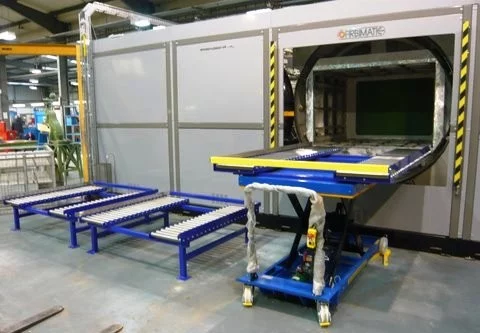
For several years, the idea among the manufacturers of industrial systems for metal washing was that the best solution to remove dirt and residues from the surface of the components was to use cleaning agents based on organic solvents.
The reasons behind this theory were several, including:
With the introduction of the European regulation EU1999 / 13 / C on the Directives on Solvent Emissions, all the traditional systems that envisaged the immersion of the components in liquids and / or vapors that could be freely released in the ‘atmosphere.
Before reaching this conclusion, several tests were carried out to try to identify the best configuration that allowed emissions to be reduced: in the end, at the light of the failures that happened, through the EuroNorm Standard 12921 (VOC Directive 2003/87 / EC) it was decided to limit the residual concentration of solvent inside the washing chamber to 1 gm / m3 before opening the loading door.
In Germany, for example, a regulation very similar to the current VOC was introduced as early as 1990: to date the restrictions envisaged in this regard are far greater than the European, American and English legislation and the use of the solvent in the Country has reduced by 98%.
Solvents such as perchlorethylene, trichlorethylene, methylene chloride and modified alcohols can consistently achieve surface gravimetry levels of 3-5 mg / m2.
The solvent is constantly purified through the distillation and filtration units, in this way the contaminants are separated from the solvent and automatically transferred inside the tanks where the predetermined cleaning levels are reached.
Inside the washing chamber, by means of ppm control and vacuum drying, the activation of coal units ensure that all emissions are within the established standard.
Vacuum drying and ppm control inside the washing chamber, by means of an activated carbon recovery unit, ensure that all components are free from solvent residues before the end of the unloading phase.
Tests and studies conducted on metal washing systems made by our company show emissions levels close to zero.
This important achievement is made possible by the use of drying systems with hermetic circuit technology which effectively eliminates the need for an emission chimney.
Both inside very small washing chambers and in large ones, it is possible to appreciate the result of high levels of surface cleanliness and the guarantee of long-term compliance with the directives on emissions.
Alongside the more than positive results in terms of emissions, other important advantages related to the use of solvent-based metal washing machines are:
FIRBIMATIC’s hermetically sealed solvent-based washing and degreasing systems, which use non-halogenated solvents such as class A III hydrocarbons, allow for up to 8 washing cycles per hour with standard filtration from 1 to 100 microns.
The structure of hydrocarbon solvent plants for metals includes:
The SFK series of machines for industrial metal washing perfectly complies with the emission standards envisaged at European level (including those of German legislation) and the EN12921 standard.
>> Find out more about the SFK FIRBIMATIC series
Would you like more details on our washing systems? CONTACT US NOW! for a consultation!
We and selected third parties use cookies or similar technologies for technical purposes and, with your consent, also for other purposes as specified in the cookie policy.
If you close this banner with a tick or click on "Decline", only technical cookies will be used. If you want to select the cookies to be installed, click on 'Customise'.
If you prefer, you can consent to the use of all cookies, including cookies other than technical cookies, by clicking on "Accept all".
You can change your choice at any time.